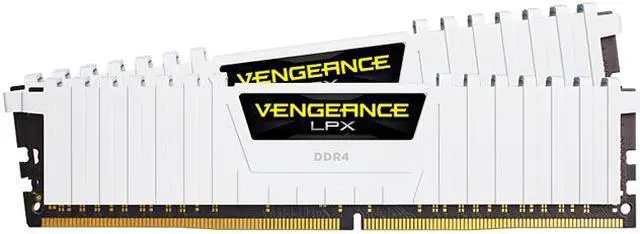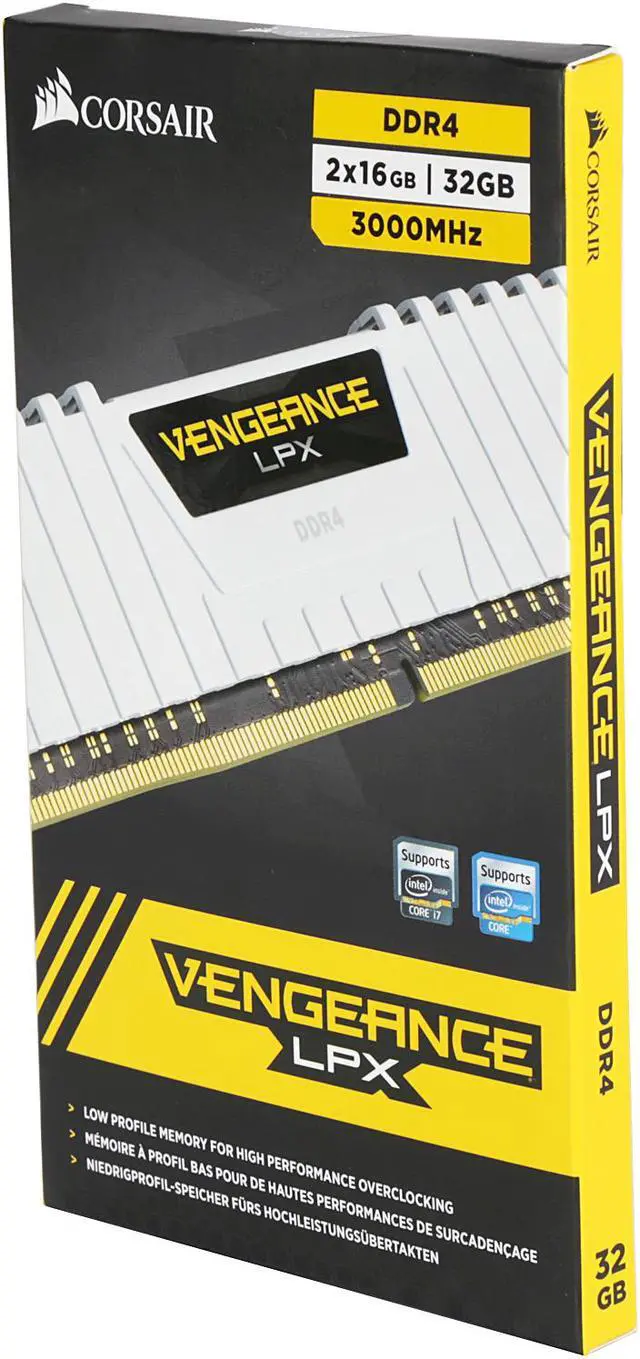

CORSAIR Vengeance LPX DDR4 DRAM Desktop Memory
Designed for high-performance overclocking
The CORSAIR Vengeance LPX memory module is designed for DIY professionals and power users seeking the most overclocking potential from their power rig. The Vengeance LPX is built with eight-layer PCB and specially-selected ICs, and is rigorously tested to exacting standards, ensuring unbeatable stability and reliability even in demanding situations. The heat spreader provides superior temperature management and has the aggressive look you want in your gaming rig. The low profile design enables better compatibility with oversized CPU coolers.

The DDR4 form factor is optimized for the latest DDR4 systems and offers higher frequencies, greater bandwidth, and lower power consumption than DDR3 modules. VENGEANCE LPX DDR4 modules are compatibility-tested across DDR4 systems for reliably fast performance. There’s XMP 2.0 support for trouble-free automatic overclocking. And, they’re available in multiple colors to match your personal preference.

Part of our exhaustive testing process includes performance and compatibility testing on nearly every motherboard on the market – and a few that aren’t.
One setting is all it takes to automatically adjust to the fastest safe speed for your VENGEANCE LPX kit. You’ll get amazing, reliable performance without lockups or other strange behavior.
Overclocking overhead is limited by operating temperature. The unique design of the VENGEANCE LPX heat spreader optimally pulls heat away from the ICs and into your system’s cooling path, so you can push it harder.
Each VENGEANCE LPX module is built from a custom performance PCB and highly-screened memory ICs. The efficient heat spreader provides effective cooling to improve overclocking potential.
The small form factor makes it ideal for smaller cases or any system where internal space is at a premium.
The best high-performance systems look as good as they run. VENGEANCE LPX is available in several colors to match your motherboard, your other components, your case - or just your favorite color.







